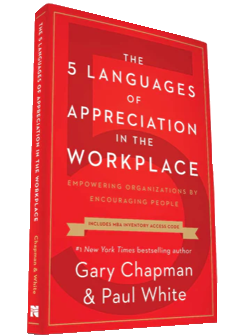The 5 Languages of Appreciation in the Workplace, is based on the book by Gary Chapman and Paul White, it outlines different ways people feel valued and appreciated in professional settings.
These languages reflect diverse preferences for recognition:
- Words of Affirmation: Individuals who respond to this language appreciate verbal praise, acknowledgment, and positive feedback. Simple affirmations, recognition of achievements, and expressions of gratitude are essential for them.
- Acts of Service: Some employees feel valued when their colleagues or supervisors show support by helping with tasks, providing assistance, or making their workload more manageable. Actions that lighten their load or demonstrate teamwork resonate with them.
- Quality Time: This language emphasizes personal interaction. Employees who value quality time appreciate having meaningful conversations, focused attention, and engaged discussions with their peers or superiors. They feel appreciated when others take time to listen and understand their thoughts.
- Tangible Gifts: These individuals feel recognized through physical tokens of appreciation, such as gifts, gift cards, or tokens of gratitude. The thoughtfulness behind the gift shows that their efforts are noticed and valued.
- Physical Touch: While not suitable for all workplace cultures, some individuals feel appreciated through appropriate physical touch, such as a handshake, high-five, or pat on the back. This language conveys warmth and camaraderie.
Understanding and implementing these languages in the workplace can enhance relationships, improve team dynamics, and boost overall morale by tailoring appreciation to each person's unique preferences.
